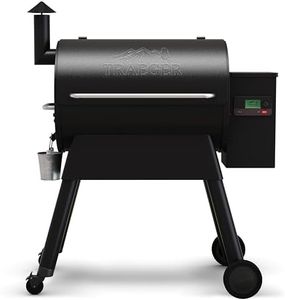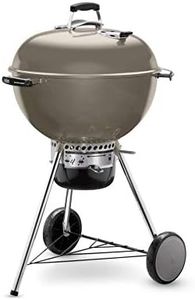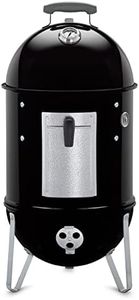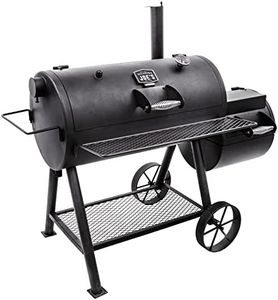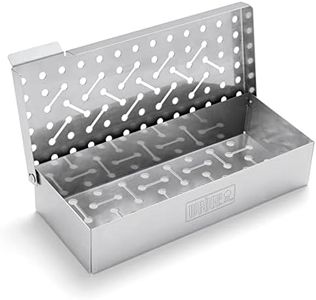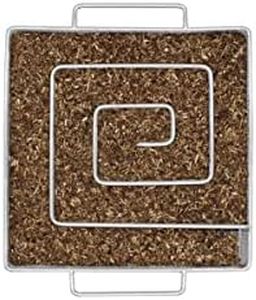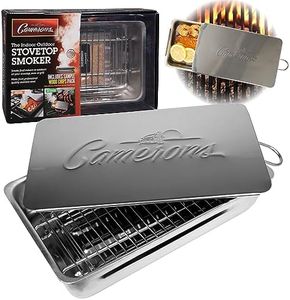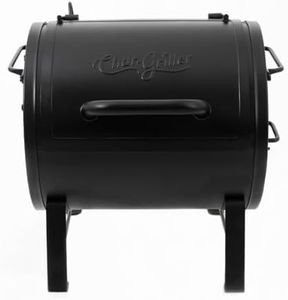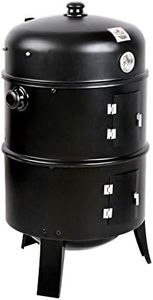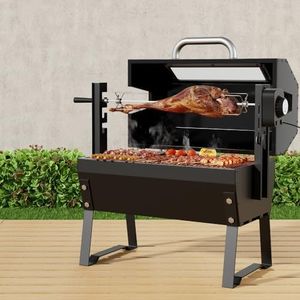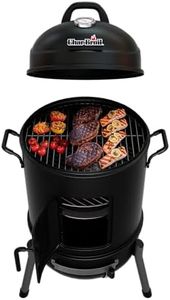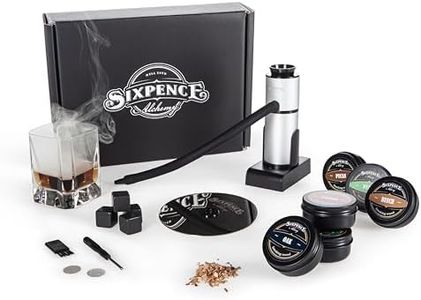We Use CookiesWe use cookies to enhance the security, performance,
functionality and for analytical and promotional activities. By continuing to browse this site you
are agreeing to our privacy policy
10 Best smokers
From leading brands and best sellers available on the web.Buying Guide for the Best smokers
Choosing a smoker is all about finding the right balance between the style, size, and control that matches your cooking habits and what you want to achieve. Smokers come in many types, each with their own strengths, and it's important to think about how hands-on you want to be, how much food you usually prepare, and where you'll use your smoker. By understanding the main features and how they match your lifestyle, you'll be able to pick a smoker that's both enjoyable to use and able to deliver delicious results for years to come.Type of SmokerThe type of smoker refers to the main design and fuel source the unit uses—such as charcoal, electric, pellet, propane, or offset. This is important because each type changes the flavor of your food, how easy it is to operate, and how closely you need to supervise the process. Charcoal and wood smokers often give the richest smoky flavors but require more attention and skill. Electric and propane smokers are much more user-friendly and great for people who want a 'set-and-forget' experience. Pellet smokers offer a middle ground, combining real wood smoke with digital controls. Think about how much time and attention you want to give to smoking food and if you prioritize convenience or traditional taste—this will guide your choice.
Cooking CapacityCooking capacity is the total amount of food the smoker can hold at one time. It’s usually measured in square inches of cooking area or by the number of racks and trays inside. This matters because a small-capacity smoker is best for individuals or small families, while larger ones are needed for entertaining guests or making big batches. If you usually cook for just yourself or a couple of people, a compact smoker will be less wasteful and easier to store. For bigger gatherings or batch-cooking, look for a larger unit that can handle more food in a single go.
Temperature ControlTemperature control refers to how precisely and steadily you can hold a smoker at your chosen heat. This is vital because smoking is a slow process that depends on stable, low temperatures. Some smokers have manual vents and dampers for adjusting airflow, while others—especially electric and pellet models—often feature built-in thermostats and digital displays. Beginners generally benefit from easy or automatic temperature controls, while experienced enthusiasts may enjoy fine-tuning the process. Think about your comfort with adjusting temperature by hand versus relying on set-and-forget options.
PortabilityPortability describes how easy it is to move the smoker around. Smaller, lighter smokers are ideal if you plan to smoke at picnics, camping trips, or different parts of your backyard. Large, heavy smokers (especially offset or cabinet types) are best left in a dedicated outdoor spot and aren’t practical to transport often. If you want a smoker you can take on-the-go, look for handles, wheels, or scaled-down designs. If it will stay in one place, you can focus on other features instead.
Ease of CleaningSmoking food can be a messy process, with ash, dripping fat, and residue to clean up. Ease of cleaning is important for keeping your smoker in good shape and ready for use. Some smokers have removable trays, ash catchers, or are made of smooth surfaces that wipe down quickly. If you want less fuss after each use, look for features that simplify cleanup. The more often you plan to use the smoker, the more important easy maintenance becomes.
Build Quality and MaterialsBuild quality and the materials used in a smoker affect durability, heat retention, and how well your unit handles the elements. Smokers made from heavy-gauge steel or coated with quality finishes last longer and maintain heat more steadily, helping with consistent smoking. If you want a smoker for years of regular use, sturdy construction is key. For occasional or beginner use, a lighter build might be fine, but should still be rust-resistant and solid enough for safety.
